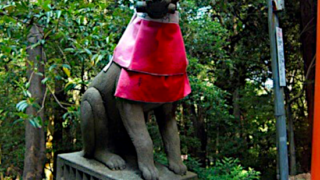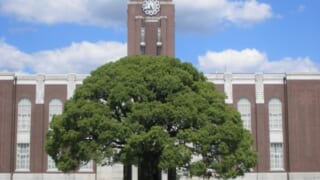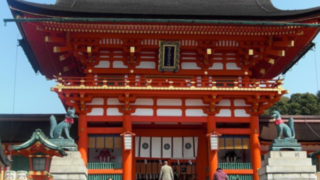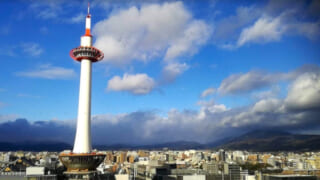There are approximately 150,000 students enrolled in universities in Kyoto City.
Among them, the number of students who entered the 38 universities in Kyoto City in 2020 was 29,316 (excluding international students).

Kyoto is said to have a large student population, but which prefectures do most of the students come from?
Here is a summary.
First, here is a list of the universities in Kyoto City.
Kyoto University
Kyoto Institute of Technology
Kyoto University of Education
Kyoto City University of Arts
Kyoto Prefectural University of Medicine
Kyoto Prefectural University
Doshisha University
Doshisha Women’s College of Liberal Arts
Ritsumeikan University
Ryukoku University
Bukkyo University
Kyoto Bunkyo University
Otani University
Kyoto University of Foreign Studies
Kyoto University of Advanced Science
Kyoto Tachibana University
Kyoto Kacho University
Kyoto College of Nursing
Kyoto University of the Arts
Kyoto Koka Women’s University
Kyoto Sangyo University
Kyoto Women’s University
Kyoto Seika University
Kyoto Notre Dame University
Kyoto University of Arts and Crafts
Kyoto Pharmaceutical University
Saga University of Arts
Shuchiin University
Hanazono University
Heian Jogakuin University
Kyoto Junior College of Foreign Studies
Kyoto Junior College of Economics
Kyoto Koka Women’s University Junior College
Kyoto Bunkyo Junior College
Saga University of Arts Junior College
Ryukoku University Junior College
Ikenobo College
Kacho College
Student’s Prefectural Origin
Let’s look at the prefectures of origin. The total number of students is for those who entered in 2020, which is the number of students in a single academic year.
The data source is the Kyoto City Statistical Portal.
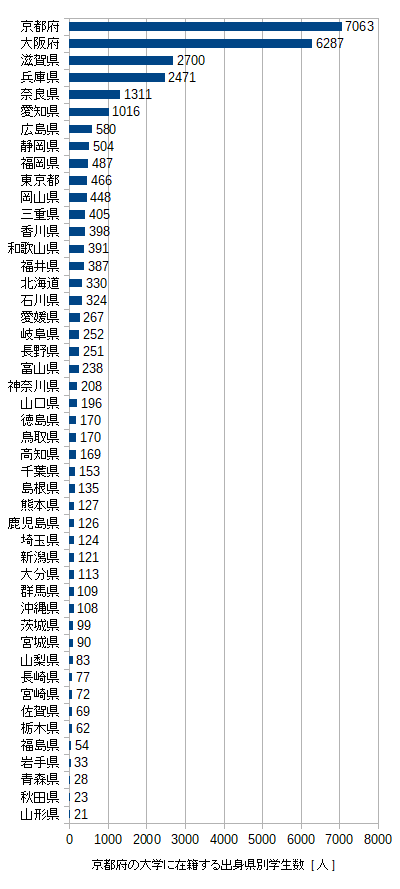
The largest group was from Kyoto Prefecture, with 7,063 people.
This was followed by Osaka Prefecture with 6,287 people, and Shiga Prefecture with 2,700 people. The top 5 prefectures are all within the Kinki region, and including Wakayama, students from the Kinki region account for 69% of the total.
With the well-developed transportation system, Osaka, Hyogo, Shiga, and Nara, which are close to Kyoto, are well within commuting distance.
I often see students speaking standard Japanese on the streets and trains, and I had the impression that students from all over Japan gathered in Kyoto, but the result of 70% being from the Kansai region was higher than I expected.
Also, Kyoto City has the highest university advancement rate in the country, so the absolute number of local students is high, and the percentage also seems to be high.
Now, there are many universities, including national, public, and private. What if we focus on national universities like Kyoto University?
Prefectural Origin of National University Students
The national universities in Kyoto City, as listed above, are Kyoto University, Kyoto Institute of Technology, and Kyoto University of Education.

The approximate number of new students for each is 2,800 for Kyoto University, 600 for Kyoto Institute of Technology, and 300 for Kyoto University of Education. As a comprehensive university, Kyoto University accounts for 75% of the total in terms of student numbers.
When I researched the prefectures of origin, the results were as shown in the following graph.
The first place is Osaka Prefecture with 664 people.
This result is not surprising, as the top schools for advancing to Kyoto University in Osaka Prefecture include Kitano, Osaka Seikou, Osaka Toin, and Seifu Nankai.
Next is Kyoto Prefecture with 588 people, which has Rakunan, Rakusei, Horikawa, and Saikyo high schools.
And the third place is Hyogo Prefecture, which has Nada and Koyou high schools.
Including Nara, Shiga, and Wakayama, the percentage of students from the Kinki region is 57% of the total.
This result, with about half of the students from the Kansai region, matched my personal impression.
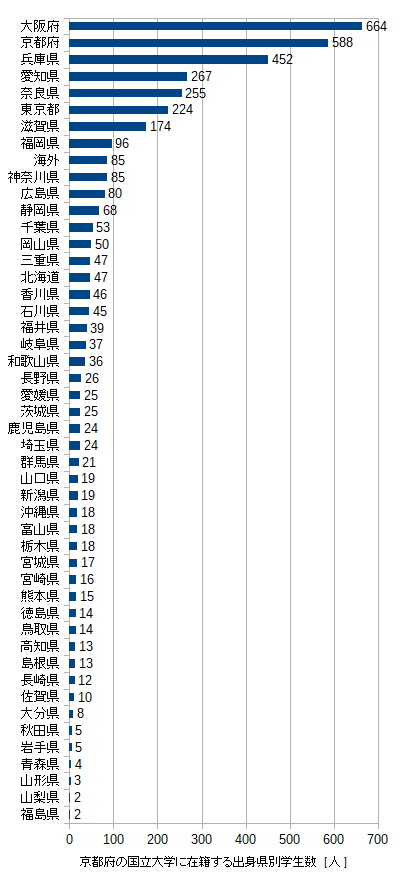
This time, I looked into the prefectural origin of university students in Kyoto City.
For those of you who are currently attending university, does this result match what you see around you?
For those who are considering aiming for a university in Kyoto, I hope this serves as a guide to how many people from your home prefecture are there, and that you will strive for a campus life in Kyoto.
